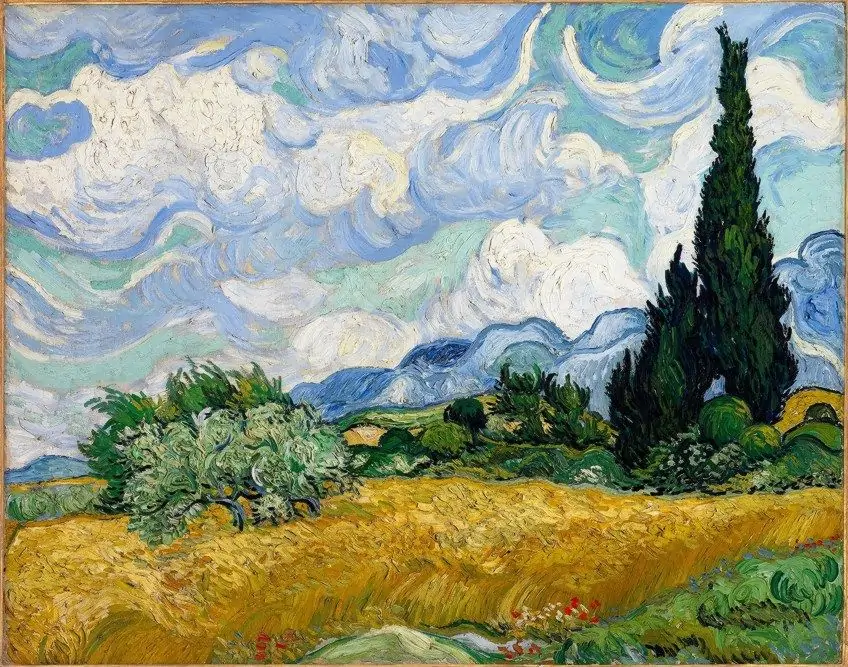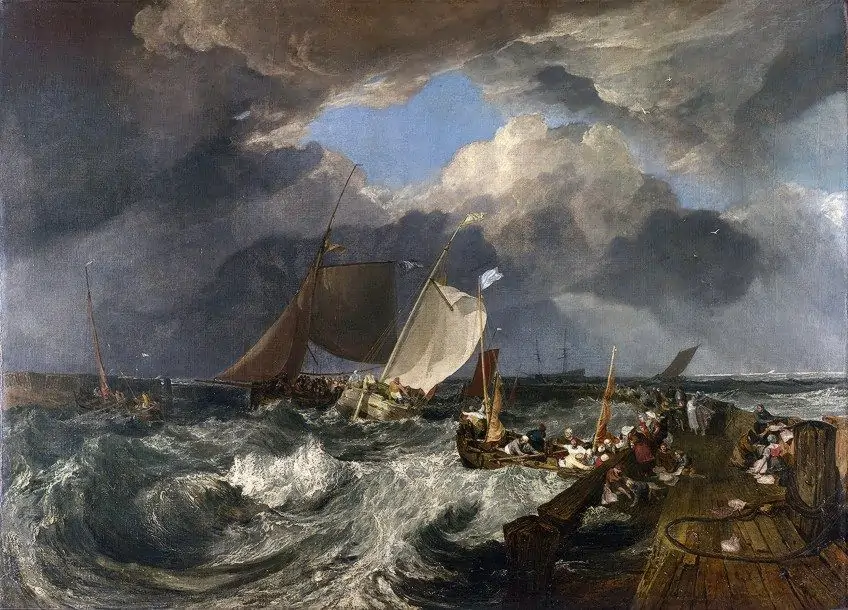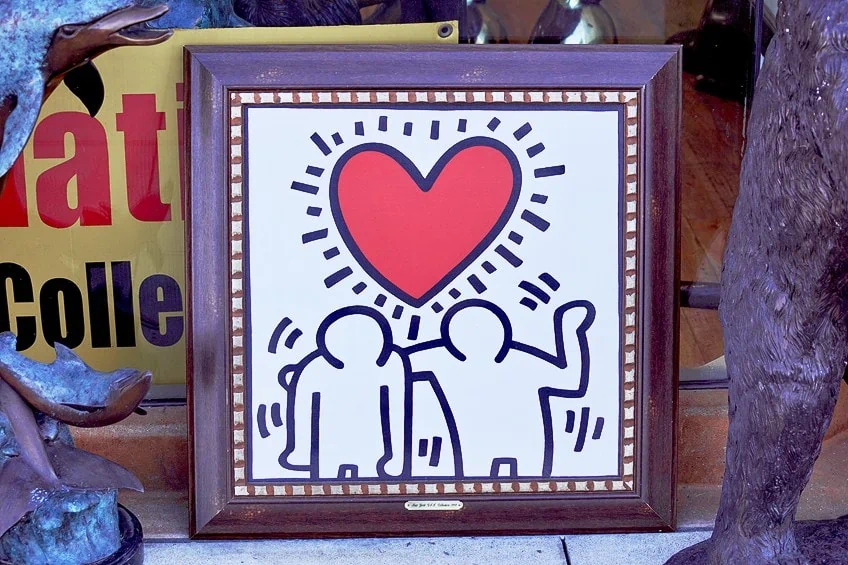Find an Artist by Name – Learn How to Identify Paintings by Artists
Who is this artist? How can you find an artist by name? Can you identify an artist’s signature by photo alone? How do you find the artist of a painting? How do you conduct an artist search by last name alone? These may be questions to the reader who is in possession of a painting of unknown origin or perhaps you need more information on the artist of a painting to determine its value. Read on for more tips and guidelines to help you answer the above questions.
Art Guide: How to Find the Artist of Any Artwork
Let us assume you have encountered an image of an artwork that immediately captured your attention or you caught a brief glimpse of a painting that really left a presence in your mind but you just cannot seem to see a label or reference to the artist of the artwork.
It can be frustrating to come across an artwork that does not have the information you are interested in, but there is a way around this.

If all you have is an image of the work, your laptop, and your trusty memory, then you are already on the right course. This article will take you through some research methods that you can use to analyze an artwork for clues that will help you learn how to find an artist by their last name, how to find paintings by artist name, how to identify a genuine artwork, and how to find the artist of a painting.
How to Find an Artist by Name
Before you employ the following research tools and techniques, it is useful to first identify what it is that you are looking at and whether the artwork is a print or a painting. This is important since if you cannot distinguish the type of artwork, you may get stuck in a rabbit hole of research and reproductions of the original artwork.
Below are a few tips to help you get started and include helpful questions you may want to ask yourself before employing technology.
Visual Cues to Identify an Artwork
To get the identity of the artist regarding the artwork in question, it is useful to look out for visual cues in art that can be used to identify what type of artwork it is and what elements are present that can add to a more specific search.
To identify the type of artwork that you are looking at, you may want to inspect the surface of the artwork as closely as possible.
If the artwork is a print, you will spot a “pixel-like” quality on the surface and the artwork would fall under an art print. If the artwork has a signature, this too can help you reduce your scope since most artworks with signatures do contain a date somewhere on the artwork, either behind or under the signature.

If you are in physical possession of the artwork in question, you may want to study the back of the artwork to look for any clues, notes, or dates. Any additional information on the back of an artwork usually relates to whether the artwork is a reproduction, part of an edition, or a collection and location – all valuable cues for your investigation.
If you do find that the artwork states “edition of X”, then it is very likely that this is just a copy of the original. Even if you do find that your artwork is a copy, there is still hope for its value.
In this scenario, you would want to find out if the artwork is a limited edition or not. Limited edition prints are prints of extremely high quality and usually have a signature. These types of prints usually sell for quite a sum at auctions. To identify if the print is a limited edition, look out for any numbers written in “05/20”. Anything written in this manner indicates that you have the fifth copy out of an edition of 20. The lower the number on the edition, the higher the value of your print.
Technology and Identification
By now, you must have come across concepts such as artificial intelligence and facial recognition. Google also has a feature on Google Photos that sorts your images out into various subcategories based on a tool that identifies what is in the image and what the image is. Similar to this, Shazam is an application that allows your smartphone to listen to a fragment of a song and can identify the artist and name of the song, even if you do not know it. The evolution of technology has progressed to the extent that it can identify objects, sounds, places, and humans.
The application Magnus, for instance, is a well-known application that enables you to photograph the artwork you are looking at.
Based on a large database, Magnus can scan the file to find a match and will display the title of the work along with the artist who made it. Other applications used to identify paintings include Smartify, which allows you to simply scan the work after setting up a few permissions. The app provides a detailed history of the artwork, as well as the artist’s information.
For ease of access, the app is also able to read out the information aloud and even lets you save the artwork to your collection for later reference. How useful! Another alternative to finding out the name of the artist or artwork title of an artwork is to post an image of the work in question on your local art forum or Facebook page.
There are millions of groups and forums that focus on the dissemination of art information, and this can be useful to gather possible hits.
You can post an image of the artwork and use captions like: Who is this artist? Where does this work come from? Does anyone recognize this painting? Another excellent identification technology is Google Lens. This application grants the consumer open access to any information on the artwork or subject.
This is made possible by Google Lens’ partnerships with various international museums that provide the relevant information in exchange for a reputable, online display of their collections. This development was made specifically for all individuals, art scholars or regular citizens, to have access to information without the red tape of museum fees or subscriptions.
This great resource makes research easier and the ability to identify paintings becomes efficient.
How to Identify Artist Signatures by Photo: Signature Search
You may not believe it but yes, you can also identify an artwork using technology via the artwork’s signature. Using a signature search or monogram search tool, you can identify artists’ signatures by photo. Artistssignatures.com is a brilliant resource to find the identity of an artist, even if the signature or initial is seemingly unrecognizable.
The platform lets you enter what you recognize from the signature.

For example, if you can recognize a few letters or know of a few keywords such as partial initials or the century, then this search function will provide you with a whole list of monograms and signatures that you can click on and information will be provided.
You do, however, need to set up an account in order to access the information.
How to Find the Artist of a Painting: Reverse Image Search
If you already have a digital version of the painting or artwork, you can use a tool called the reverse image search. You can copy and paste the URL of the image into the search engine, which will bring up sources and websites that contain that painting. This will provide you with all the information on the web that talks about the painting and most likely offers more insight.
A famous site to run the reverse image search is TinEye, among others such as Getty Images, Bing Visual Search, Picsearch, and Google Image Search.

How to Find Paintings by Artist Name: Simple Artist Search
You have finally found the name of the artist – what is next? Who is this artist? How do you find paintings by artist name? The answer to these questions is as simple as logging onto your search engine of choice and entering the artist’s name.

Hit the search icon and even include other keywords such as “artist name biography”, “artist name history”, “artist name paintings”, and any other specific phrases related to what you are looking for. Usually, any biography from a reputable site will include a general overview of the artist’s life and general accomplishments.
This should help you with determining the value of the painting in question.
How to Find an Artist: Other Methods
One way to find the artist of a painting or artwork is to determine the style of painting that the art depicts. Once you have made an informed guess, you can search up the artist by movement or art style. Perhaps even the year if you have already acquired that information. Biographical dictionaries are useful for this. Alternatives to the internet and technology include your local library (given it has an art section).
Libraries generally have an excellent grasp on organizing information so perhaps you could also approach a librarian for help and he or she can assist you with the database search.
Biographical Dictionaries
Once you have established the artist’s name, it is also helpful to gain insight into some important facts about the artist. Biographical dictionaries can be used in conjunction with the artist’s name and are organized via region, subject, period, and media.
Biographical dictionaries also contain relevant statistics such as dates of birth and death, academic affiliations, activities, artist memberships, and any other branch of information that is relevant to the artist.
A few biographical dictionaries also provide the different versions of the artist’s name in case the artist signed under a different spelling. An artist could be found in more than one biographical dictionary so it is useful to ensure that you go through a few before concluding your research.
This is also a great resource to conduct an artist search by their last name, given that you only have the artist’s last name.
Examples of Biographical Dictionaries
- Mallet’s Index of Artists, International-Biographical, Including Painters, Sculptors, Illustrators, Engravers and Etchers of the Past and Present (1948) by Peter Smith
- Mantle Fielding’s Dictionary of American Painters, Sculptors, and Engravers (1983) by Optiz, Glenn B
- 250 Years of Afro-American Art: An Annotated Bibliography (1991) by Igoe, Lynn Moody, and James Igoe
- Dictionary of Contemporary American Artists (1994) by Paul Cummings
Online Resources for Artist Biographies
- Getty Institute Research Tool
- Google Arts and Culture
- Britannica
Value and Verification
Perhaps you have found a signature and you are already in possession of the artist’s name and information. You may wonder if the signature could be a forgery or just your luck of holding an original and the only way to debunk this is to understand what a forged signature looks like since many people rely on making copies of famous works.
One pro tip before getting a proper valuation is to observe the brush strokes and colors on the painting.

If your research suggests that the artwork is fairly old but the brush strokes appear to be pristine, as if made yesterday, then the chances of the painting being a copy are high. Another thing to keep in mind is that the art of forgery has been occurring for centuries, so the copy could have been produced shortly after the original was made. How tricky! To detect fresh paint, your painting would probably still carry the smell of fresh paint and not show any signs of discoloration or damage. If it is pristine, it may be too good to be true.
Finally, one way to recognize a potential forgery or fraud is to be aware that the provenance of the work would be on-hand since most high-value works will have an account of ownership so that you have a record to trace the dates from.
If all you have are initials to work from, another solution could be to attempt to track the artwork back to its previous owners. If the painting is identified as a family heirloom, then you already have a great place to start. Some additional prompts to help you generate some clues include:
- What is the subject matter in the painting?
- If the painting is a portrait, can you obtain the identity of the sitter?
- Who bought the painting?
- When was the painting acquired?
- Are there any gallery labels attached on the reverse side?
- Are there any numbers present?
- If the painting is a landscape, can you pinpoint the location that is depicted?
These are all useful questions to ask yourself when assessing an artwork of unknown origin.
In the event you are lucky enough to find a gallery or framer’s label, you can try to contact the gallery or framer for information as they are more likely to have a record of the artwork, along with the origin information. If you find numbers written in chalk on the frame of the artwork, then it is likely that the artwork had been through an auction. This is a good sign if you are wondering if your artwork has any value.
We hope this article has provided you with enough insights to help you learn how to find an artist by name and other research tactics available through technology. From a simple Google search to multiple online tools, artist search platforms, and applications, you can be sure to identify your artwork and get more information on the artist.
Frequently Asked Questions
How Do You Find Paintings by Artist Name?
There are various online databases and search tools to look up artists’ paintings by name. These can range from biographical dictionaries to Google Arts and Culture, which contains any related information to any artwork from around the globe. If you have the artist’s name, you can simply begin by doing a basic artist search on a search engine of your choice. Any associated galleries should also come up, which also contain important artwork information.
Where Can You Find Detailed Artist Information?
You can find more detail on any artist from a variety of online sources such as the Google Arts and Culture and Britannica websites, which offer detailed insights and biographical information. Alternatives to finding detailed artist information include searching for books with the artist’s name as the title in Google Scholar, an academic online library, or Amazon.
How Can You Determine If an Artwork Is a Copy?
You can determine if an artwork is a copy by looking for visual clues that indicate if it is a reproduction. If it is a print of an original, then you will find tiny dots or pixel-like marks on the surface. If it is a painting, then the artwork will look and smell as if newly painted. If the artwork is unsigned and the majority of an artist’s works are characterized by the inclusion of a signature, then the chances of the artwork being a copy are also high.
Jordan Anthony is a Cape Town-based film photographer, curator, and arts writer. She holds a Bachelor of Art in Fine Arts from the University of the Witwatersrand, Johannesburg, where she explored themes like healing, identity, dreams, and intuitive creation in her Contemporary art practice. Jordan has collaborated with various local art institutions, including the KZNSA Gallery in Durban, the Turbine Art Fair, and the Wits Art Museum. Her photography focuses on abstract color manipulations, portraiture, candid shots, and urban landscapes. She’s intrigued by philosophy, memory, and esotericism, drawing inspiration from Surrealism, Fluxus, and ancient civilizations, as well as childhood influences and found objects. Jordan is working for artfilemagazine since 2022 and writes blog posts about art history and photography.
Learn more about Jordan Anthony and about us.
Cite this Article
Jordan, Anthony, “Find an Artist by Name – Learn How to Identify Paintings by Artists.” artfilemagazine – Your Online Art Source. August 11, 2022. URL: https://artfilemagazine.com/find-an-artist-by-name/
Anthony, J. (2022, 11 August). Find an Artist by Name – Learn How to Identify Paintings by Artists. artfilemagazine – Your Online Art Source. https://artfilemagazine.com/find-an-artist-by-name/
Anthony, Jordan. “Find an Artist by Name – Learn How to Identify Paintings by Artists.” artfilemagazine – Your Online Art Source, August 11, 2022. https://artfilemagazine.com/find-an-artist-by-name/.








